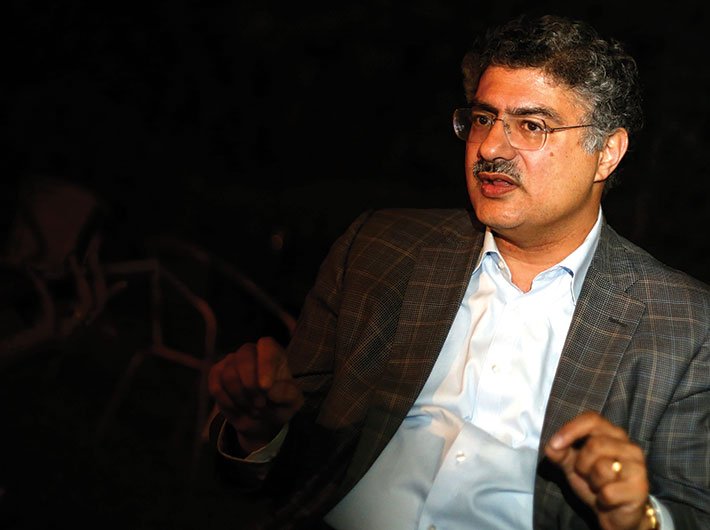It’s been more than a year since Prof Ashish Nanda took over as director of the Indian Institute of Management, Ahmedabad (IIM-A). An IIT-Delhi and IIM-A alumnus and former Robert Braucher professor of practice at Harvard Law School, Nanda, 54, is a man on a mission. At IIM-A he has brought in changes in the selection of students and introduced deferred admission system. In an interview with Jasleen Kaur, the former Harvard Business School professor talks about challenges before the institution and his vision to take it past the world’s best B-schools. Excerpts from the interaction:
How has the experience of helming IIM-A been so far and what plans do you have for the institute?
For the first three months I met faculty members in one-on-one sessions, as also students and several of the alumni. This was to try and understand the challenges and constraints they face and the aspirations they have and how we can address it in a meaningful manner.
In the second phase, I focused on developing, in conversation with people, an understanding of their vision and their strategic priorities. This process took almost six months.
IIM-A is an institute with strength, and it is an extremely selective institution. At Harvard, the selection last year was 8 percent of applications, but at IIM-A it was 0.26 percent. However, IIM-A has been successful for almost five decades in an area where there has not been much competition. And because of that we have tended to become a little bit reactive and somewhat slow.
Till very recently, going abroad for pursuing MBA was difficult and challenging. And the gap between IIM-A and other institutions within India was huge. This has made us less willing to go out and reach out to people, inertia has set in and a somewhat arrogant attitude has crept in.
But the environment has changed. Many students are going abroad for an MBA. Institutes in the western world are aggressively trying to attract students here. In addition, other schools in India have done better. The gap between IIM-A and the second one has reduced. The big technological tsunami of MOOCs (massive open online courses) is changing the way you look at academia. So, if we just sit back and say everything is fine, our days on the top will be numbered.
Our goal is to be one of the top management institutes in the world in the next 10 to 15 years. We should be challenging Harvard.
Where do you see IIM-A lacking?
IIM-A was in a protected environment like most Indian businesses were. In that environment it did very well. When you are in a protected environment, you tend to adopt some negative features like corruption or people seeking power for themselves or not innovating enough in terms of technology.
Luckily, IIM-A did not suffer from all these. It remained meritocratic and continued to develop other things but [with time] it became less hungry. The hunger or desire to excel or stretch to do the best has become less.
Does it mean IIM-A is not adapting to the changing environment?
It is not that. What you want to do in a premier institution like IIM-A is to be on the forefront of the change, to be predicting where the changes are and to be leading that conversation. In at least some of the spheres we have been lagging rather than leading. Also, people have been individually doing a lot of things but not as a team or an institution.
What is your vision for IIM-A?
Our vision is to educate leaders of enterprises. Earlier, we used to say educate managers but these are not managers alone; they are leaders and that too of not just established companies. It is this broader frame that we are looking to fill, where we want to nurture the spirit of risk taking.
In order to achieve that vision there are three strategic priorities that we need to have. The first is connect; the second is to nurture and the third is to grow.
Connect is to be outgoing and reaching out to people from four constituencies. First, people who are doing cutting edge research. Second, the practitioners, to know the challenges they are facing. Third is our alumni who are spread all over in positions of responsibility and have tremendous loyalty for the institution so that they can give back in the form of learning. Fourth is to open gates to the community. I learnt this at Harvard where anybody from the town of Cambridge could walk through the university campus.
At IIM-A we had a little bit of a bubble mentality. Individually, people have been working on this aspect, like some of the students wanted to teach underprivileged children. Later, we institutionalised it through a programme called ‘Prayaas’. We have also started ‘A day at IIM-A’, wherein schoolchildren, particularly girl students, come and spend a day here.
What are the major challenges you are facing in terms of faculty?
When I graduated from IIM-A 32 years ago, we had around 85 faculty members and about 400 students. Today, we have 1,000 students.
If we compare it to Harvard, entry in [just] MBA class is 900 students. And our faculty today is just 93, even as students have increased 2.5 times. If we want an impact in research, we need to bring in high-quality faculty. But there are two constraints – one is compensation and the other is that they have to be assured that we are doing high-quality research.
One way is to bring in more faculty so that they get enough space to do research and the other is to supplement the base salary with additional compensation [for taking up research], which we are trying to do. We are encouraging industry people and our alumni to donate for research and faculty fellow positions and these will give additional compensation and funding for research.
You are introducing a deferred admission system from the next academic year. How does it work?
We have students who are coming in with zero to two years of work experience [for the MBA programme]. Our selection percentage is so low that students appear for CAT exams immediately after they complete their studies, because they think they will not be able to take out time [to study for the test] once they start working. We have just started a scheme of deferred admission where, if students get in and they do not have work experience, we will hold a seat for them to come back after two years of relevant work experience. We want a class where people have diverse work experience where they are able to get most value out of their education.
You have made some changes in the selection process during the current academic year…
This year we did not select only those who did well in their CAT exam. We identified five streams and placed experts at the interview stage. Students were asked to write two essays – it could be on the book they read recently – and we looked at their analytical as also their social skills. The consequences have been dramatic.
The intake of non-engineers, who were stuck at 7-8 percent for many years, has increased to 11 percent this year. Women were stuck at 22 percent; this year they are close to 30 percent. We have geographic diversity in our institute but had very few international students and they bring a different perspective, culture and environment.
Your views on the recent fee hike?
There are a bunch of reasons for that. The first being inflation. The inflation rate in India over the last two years has been approximately 10 percent per annum. It has reduced now but it has been projected at 8 percent this year and 7 percent next year. We had kept our fees fixed for the last two years. Now we have suggested a fee hike of 11.5 percent, which over a period of three years will come out to be about 3.5 percent per annum, which is a third of the inflation rate.
What kind of support are you looking for from the government?
We want to increase intake in our Phd programme and we want to double the size. But every student we teach in this programme costs us. We are going to the government [which wants to open more higher education institutions, and make them understand that] the most desired and strategic resource will not be building but the professors who are going to teach there. We want them to fund this. Then, we have a four-month faculty development programme (FDP). We are willing to significantly increase its size if the government takes care of the financial resources.
The interview appears in January 1-15, 2015, issue

